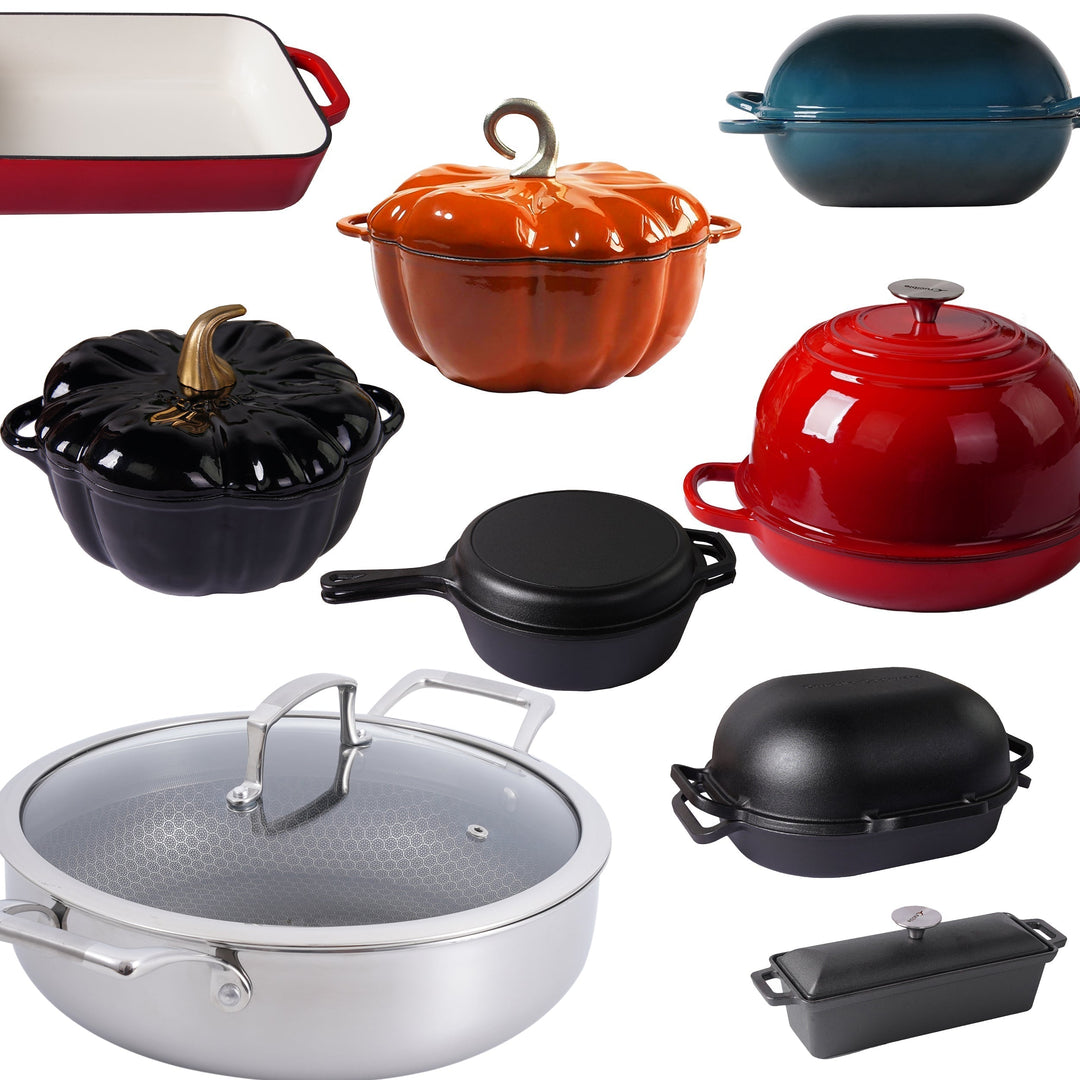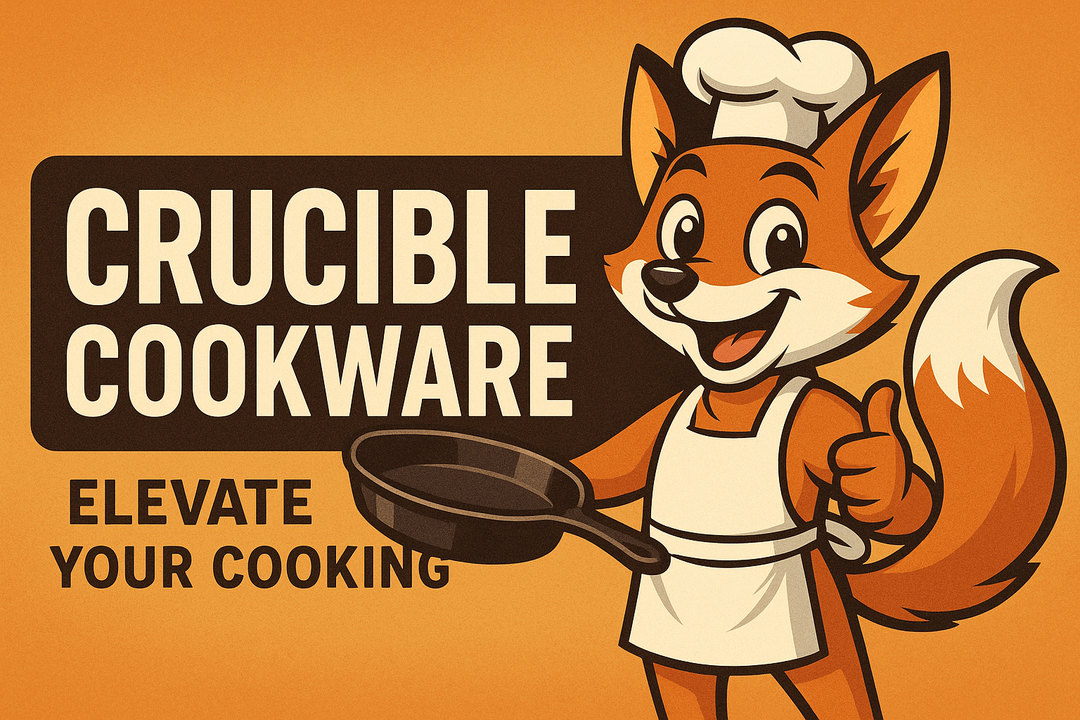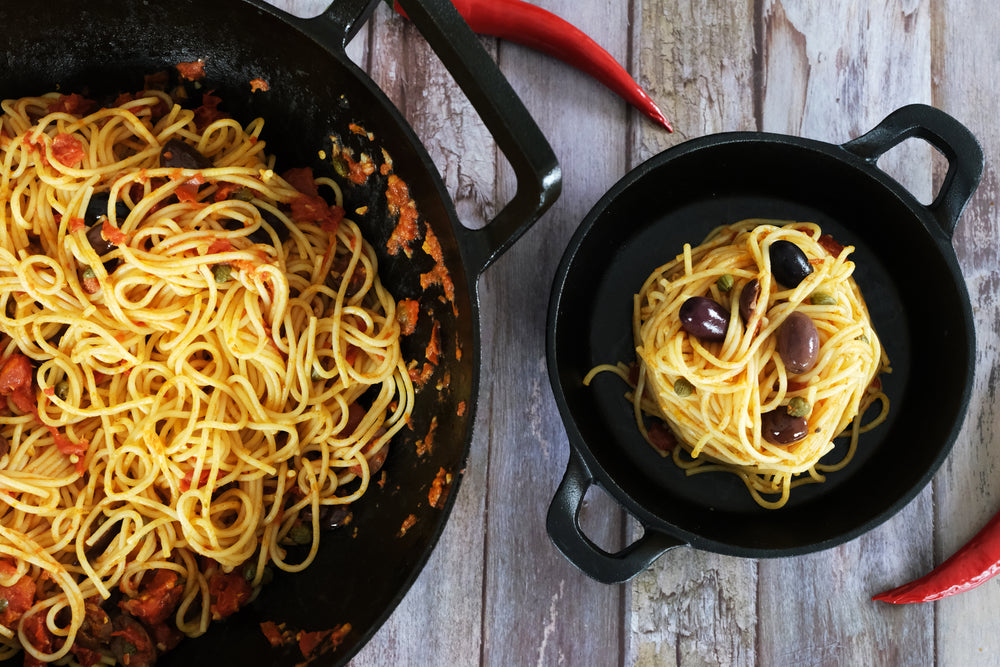Støpejernpleie 101: Hvordan krydre, rengjøre og vedlikeholde stekepannen din for livslang bruk

Cast iron cookware er et kjøkkenessensial som, med riktig pleie, kan vare i generasjoner. Enten du er ny med støpejern eller ønsker å friske opp vedlikeholdskunnskapene dine, vil denne guiden gi deg alt du trenger å vite om innbrenning, rengjøring og vedlikehold av pannen din. Følg disse tipsene for å sikre at støpejernet ditt holder seg i topp koketilstand, forblir non-stick, og er fri for rust.
Forhåndsinnbrent din støpejern
Innbrenning er prosessen med å skape en naturlig, non-stick belegg på overflaten av din støpejernspanne. Slik gjør du det:
1. Rengjør stekepannen:
- Vask stekepannen med varmt vann og mild såpe. Dette er den eneste gangen du bør bruke såpe på din støpejernspanne. Bruk en børste eller svamp for å fjerne eventuelle rester.
- Skyll grundig og tørk helt med et håndkle.
2. Påfør olje:
- Påfør et tynt lag vegetabilsk olje eller smeltet fett på hele overflaten av stekepannen, inkludert håndtaket og bunnen.
- Bruk et papirhåndkle for å tørke bort overflødig olje, slik at det bare blir et veldig tynt lag igjen.
3. Stek stekepannen:
- Forvarm ovnen til 450°F (230°C).
- Legg et ark aluminiumsfolie på nederste rille for å fange opp eventuelle drypp.
- Plasser stekepannen opp ned på midterste rille.
- Stek i en time, slå deretter av ovnen og la stekepannen avkjøles inni.
Gjenta denne prosessen 2-3 ganger for et sterkere innbrenningslag.
Rengjøring av ditt støpejern
Riktig rengjøring er avgjørende for å opprettholde innbrenningen og levetiden til din støpejernsstekepanne.
1. Unngå såpe og harde skrubbere:
- Rengjør stekepannen med varmt vann og en børste eller ikke-slipende skrubber. Unngå å bruke såpe, da det kan fjerne innbrenningen.
- Hvis mat sitter fast, bruk grovt salt som et mildt slipemiddel for å skrubbe det bort.
2. Tørk grundig:
- Etter vask, tørk stekepannen umiddelbart og helt med et håndkle. Eventuell gjenværende fuktighet kan forårsake rust.
3. Påfør et tynt lag olje:
- Når det er tørt, påfør et veldig tynt lag olje på overflaten av stekepannen for å beskytte den mot fuktighet og opprettholde innbrenningen.
Vedlikehold av ditt støpejern
Konsekvent vedlikehold vil holde din støpejernskokkekar i topp stand for alle dine matlagingsbehov.
1. Vanlig bruk:
- Jo mer du bruker støpejernspannen din, desto bedre blir den. Matlaging med olje og fett vil fortsette å bygge opp innbrenningen.
2. Unngå sure matvarer:
- Matlaging med svært sure matvarer (som tomatsaus) kan fjerne innbrenningen. Hvis du lager sure matvarer, innbrenn pannen på nytt etterpå.
3. Oppbevar riktig:
- Oppbevar støpejernet på et tørt sted. Hvis du stabler med annet kjøkkenutstyr, legg et papirhåndkle eller klut mellom delene for å forhindre riper og rust.
Feilsøking av vanlige problemer
1. Rust:
- Hvis pannen din utvikler rust, skrubb den med stålull for å fjerne rusten, og innbrenn den deretter på nytt etter trinnene ovenfor.
2. Klissete rester:
- Hvis overflaten føles klissete, betyr det at det ble brukt for mye olje i innbrenningsprosessen. Stek pannen i ovnen på 375°F i en time for å fikse dette.
3. Flassing:
- Flassing kan oppstå hvis pannen ikke ble innbrent riktig. Fjern de flassende områdene med en skrubb og innbrenn pannen på nytt.
Avkrefter vanlige myter om støpejern
1. Myte: Du kan ikke bruke såpe på støpejern:
- Selv om det vanligvis er best å unngå såpe, kan mild såpe brukes om nødvendig. Bare sørg for å innbrenne pannen på nytt hvis du bruker såpe.
2. Myte: Støpejern varmer jevnt:
- Støpejern holder godt på varmen, men varmer ikke alltid jevnt. Forvarm pannen i noen minutter for å sikre jevn steking.
3. Myte: Nytt støpejern er klart til bruk:
- Selv forhåndsinnbrente panner drar nytte av ekstra innbrenning hjemme for å bygge opp en sterkere non-stick overflate.
Ved å følge disse tipsene kan du holde din støpejernspanne i utmerket stand, og sikre at den tjener deg godt i mange år fremover.















Legg igjen en kommentar